How Chloé Helped Bring Alive the Costumes for ‘Becoming Karl Lagerfeld’
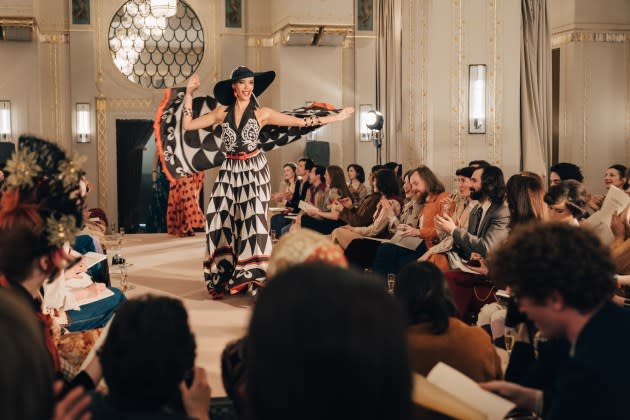
PARIS — How do you breathe life into one of world’s most iconic fashion figures?
That was the challenge facing Pascaline Chavanne, the costume designer for “Becoming Karl Lagerfeld,” the six-part TV series that hit Hulu on Friday.
More from WWD
EXCLUSIVE: The Eiffel Tower Has a Cameo in Chloé's Fall Campaign
Actor Daniel Brühl Talks 'Becoming Karl Lagerfeld' in Hulu's Six-part Series
“I am like a caricature of myself, and I like that. It is like a mask. And for me the Carnival of Venice lasts all year long,” the late designer was quoted as saying.
If Chavanne could have tapped into that instantly recognizable silhouette — white ponytail, sunglasses, stiff white collar, slim suit and fingerless gloves — her job would have been easy. Instead, the series is set in the ‘70s at a time when Lagerfeld had yet to become a household name.
“That was my greatest fear: that people would not recognize him,” she says. “When we started to work on the project, frankly, it was hard to find photographs of him at this time.”
Since streaming service Disney+ announced last year that Spanish German actor Daniel Brühl had been cast as Lagerfeld, interest in that part of the designer’s career has blossomed, fueled in part by the “Karl Lagerfeld: A Line of Beauty” exhibition at the Metropolitan Museum of Art’s Costume Institute.
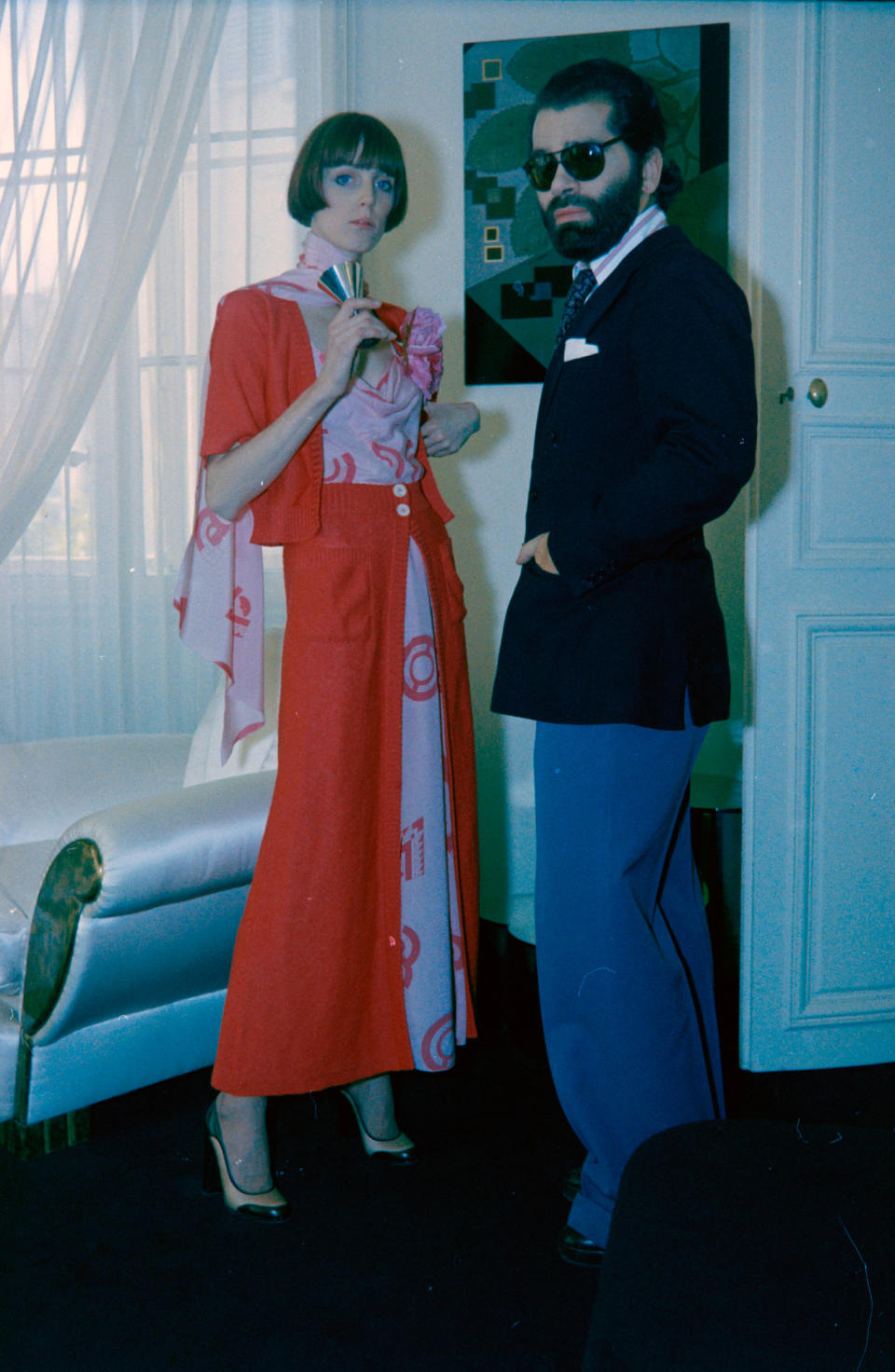
Chavanne, an award-winning designer known for her work with auteur filmmakers including Roman Polanski, Leos Carax and François Ozon, relished the opportunity to tackle a character “as extraordinary, as fanciful” as the German designer.
“We know little about his past. We know only what he was willing to reveal and what he wanted us to know, so that made it super interesting,” she explains. “So we worked like archeologists — we tried to dig up as much information about him as we could.”
While Lagerfeld is best known for his tenure of more than three decades at Chanel, the TV show focuses on his work at Chloé. Chavanne worked closely with Géraldine-Julie Sommier, head of the Chloé archive, to bring alive that era through scenes set in the Chloé atelier, and by recreating its spring 1973 runway show.
Sommier gave her access to original designs, sketches and photographs, but all the images of the show were in black and white. Based on the color of surviving items, Chavanne worked with a graphic designer to recreate the motifs, many of which were hand-painted onto silk at the time but were rendered here as prints, for reasons of cost and time.
A case in point is the Rachmaninoff dress, whose graphic patterns were inspired by the marble floor of the bathroom designed by Armand Albert Rateau for Jeanne Lanvin in 1924 — a typically erudite Lagerfeld art reference. It was among the dresses that were copied, while others were more loosely adapted for the purposes of the plot.
Chavanne explained that the Chloé show had to symbolize the “pop” spirit of Lagerfeld and his crowd of American friends, which included illustrator Antonio Lopez and models Pat Cleveland and Donna Jordan, versus the bourgeois sophistication of the haute couture crowd represented by his rival Yves Saint Laurent.
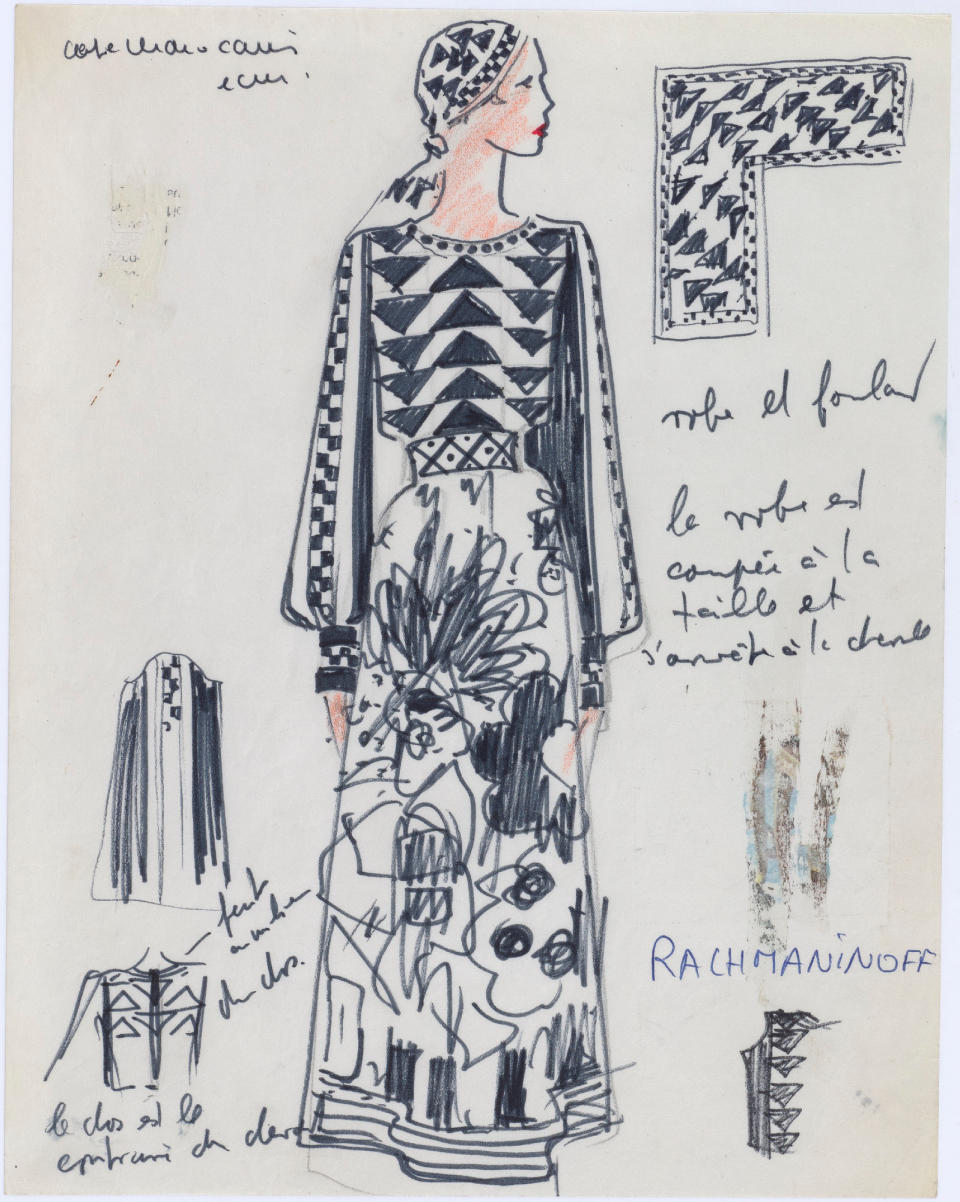
Chloé founder Gaby Aghion liked to show her collections over breakfast, initially at the Café de Flore in Saint-Germain-des-Prés and later at Laurent, a restaurant near the Avenue des Champs-Elysées, making for a uniquely spontaneous experience, Sommier says.
In the series, models are shown changing in the kitchens, and when two of them fail to show up, Lagerfeld’s partner Jacques de Bascher — played by Canadian actor Théodore Pellerin — rounds up two prostitutes as last-minute replacements.
Contrast that atmosphere of barely contained chaos with Saint Laurent’s shows, which were orchestrated down to the last millimeter by his partner Pierre Bergé.
Since Chavanne did not have access to the Saint Laurent archives, she drew inspiration from the “Gold: Les Ors d’Yves Saint Laurent” exhibition at the Yves Saint Laurent Museum in Paris for the runway outfits in a key scene depicting one of his haute couture shows.
“It’s hard to measure up to Monsieur Saint Laurent, so I wasn’t going to start reinterpreting his creations,” she says. “It was more like a sketch or an outline.”
Another major scene is the wedding of Paloma Picasso, played by French fashion designer and “It” girl Jeanne Damas. De Bascher’s close friend Philippe Heurtault was the official photographer of the event, providing a rich trove of research material for Chavanne and her team.
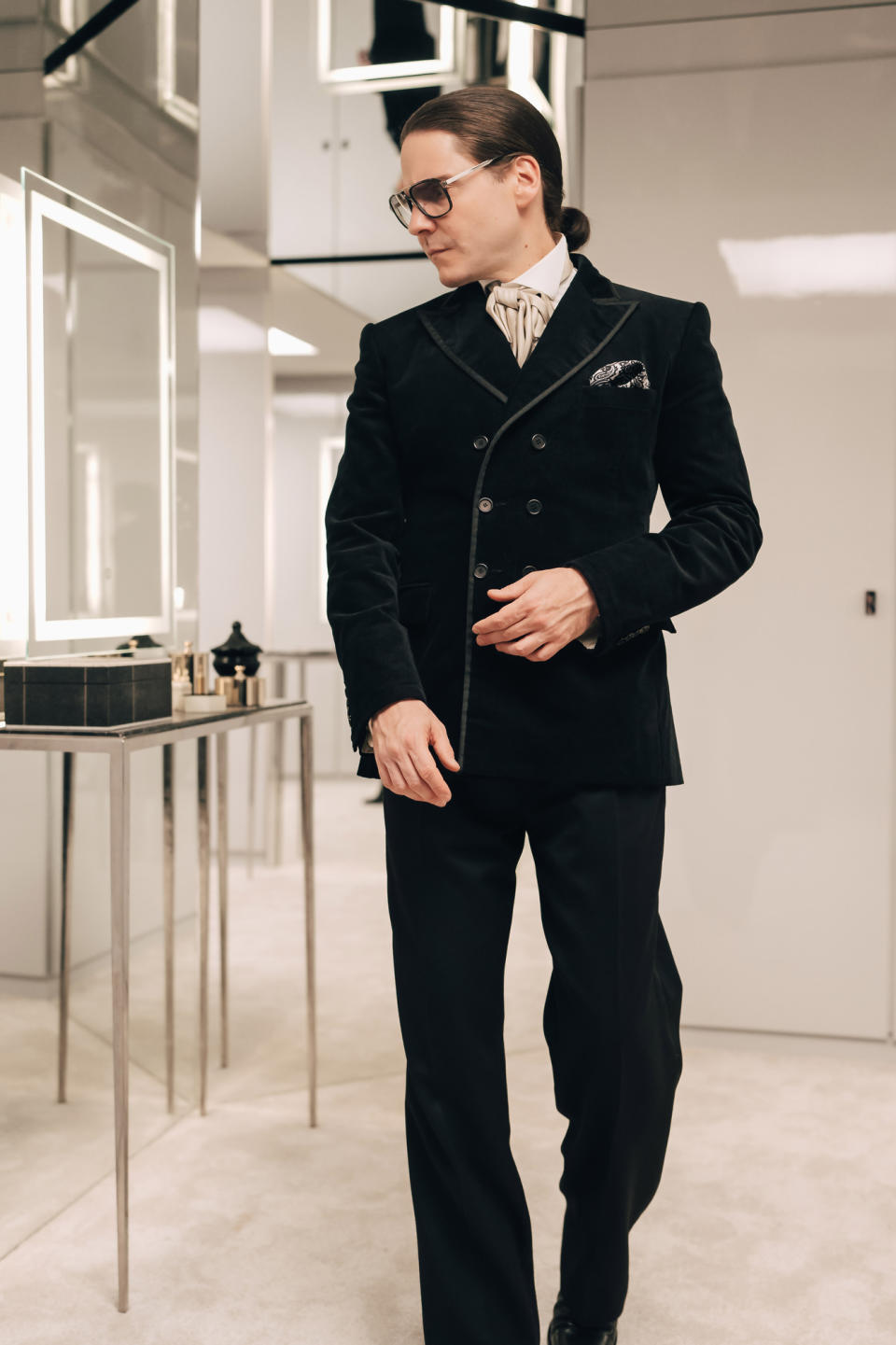
They fitted a total of 3,000 costumes for the series, which was shot over nine months. More than 160 outfits were made from scratch, and Chavanne teamed up with vintage expert Olivier Châtenet to track down others from second-hand specialists like Chez Sarah at the Saint-Ouen flea market near Paris.
Some of the pieces sourced by Chavanne have found a permanent home in the Chloé archives. To make sure the costume department’s copies could not be mistaken in future for original vintage pieces, production company Gaumont developed a special logo to identify the costumes and sketches used in the show.
“The set design team made these little stamps for the sketches in the graphic style of the period, which I thought was unbelievably creative,” Sommier says. “I consider myself a stickler for detail, and I wasn’t expecting this much finesse and attention to detail on their part.”
Brühl and French actress Agnès Jaoui, who plays Aghion, visited the Chloé archives and attended fittings with the house’s ready-to-wear teams. Some vintage outfits were also used as props, though Sommier drew the line at actors actually wearing the pieces.
Despite this forensic level of precision, Chavanne says she does not like to be too literal.
“I feel a lot of love for the characters I work on, which pushes me to do extremely thorough research. Having said that, the idea is not to make carbon copies,” she says.
“It’s not a biopic in the classic sense. I think biopics tend to be a little inert. Here, on the contrary, what we’re trying to convey is rather the soul, the motivations and the influences that were driving Karl Lagerfeld during this period in order to understand him better, quite simply,” she explains.
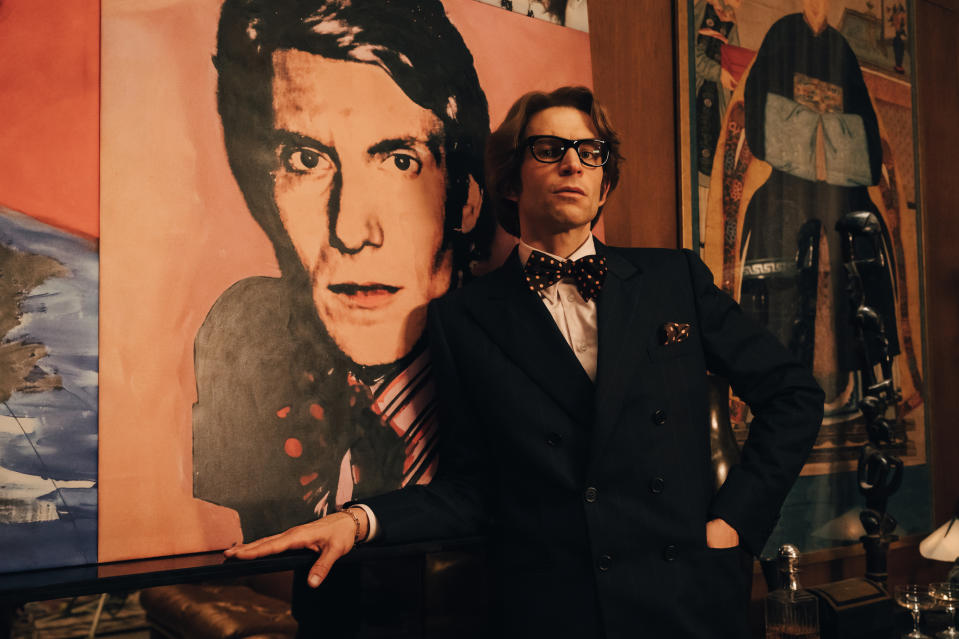
With the story stretching over a decade, Lagerfeld’s evolution is reflected in his clothes. In one early scene, he wears a pussy bow blouse in a wild print that he developed for Chloé. In the late ‘70s, he switched to monogrammed overshirts, or two shirts worn layered for a “double collar” effect.
As the ‘80s approached, the designer traded his loose hair and full beard for his trademark sleek ponytail, sunglasses and fan.
During this period, Lagerfeld grew noticeably thicker, and the show suggests he had an unhealthy relationship with food. In one scene, Brühl is seen squeezing into a corset, while toward the end of the series, the actor wears slightly undersized shirts and padding around the midriff.
“All the elements of his wardrobe helped him to get into character. He used them like a tool, like a pencil to draw,” Chavanne says.
Brühl was particularly enamored of his high-heeled shoes, which included a pair of knee-high musketeer boots custom-made by Clairvoy, the shoemaker famous for creating all the footwear for the Moulin Rouge’s cancan dancers.
“The day we tried on the first prototype of a high-heeled shoe, Daniel became Karl Lagerfeld. With his Spanish origins, he was like a toreador. It gave him a kind of natural strength and authority to inhabit the character, and that was a pretty magical moment,” Chavanne says.
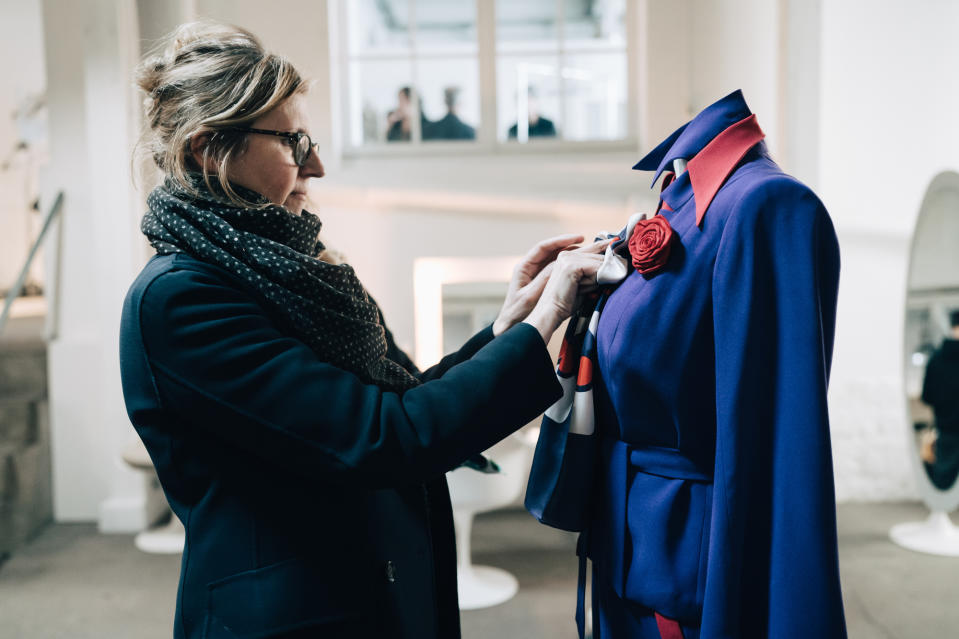
Launch Gallery: A Look at the Fashion in Becoming Karl Lagerfeld
Best of WWD

 Yahoo News
Yahoo News 
